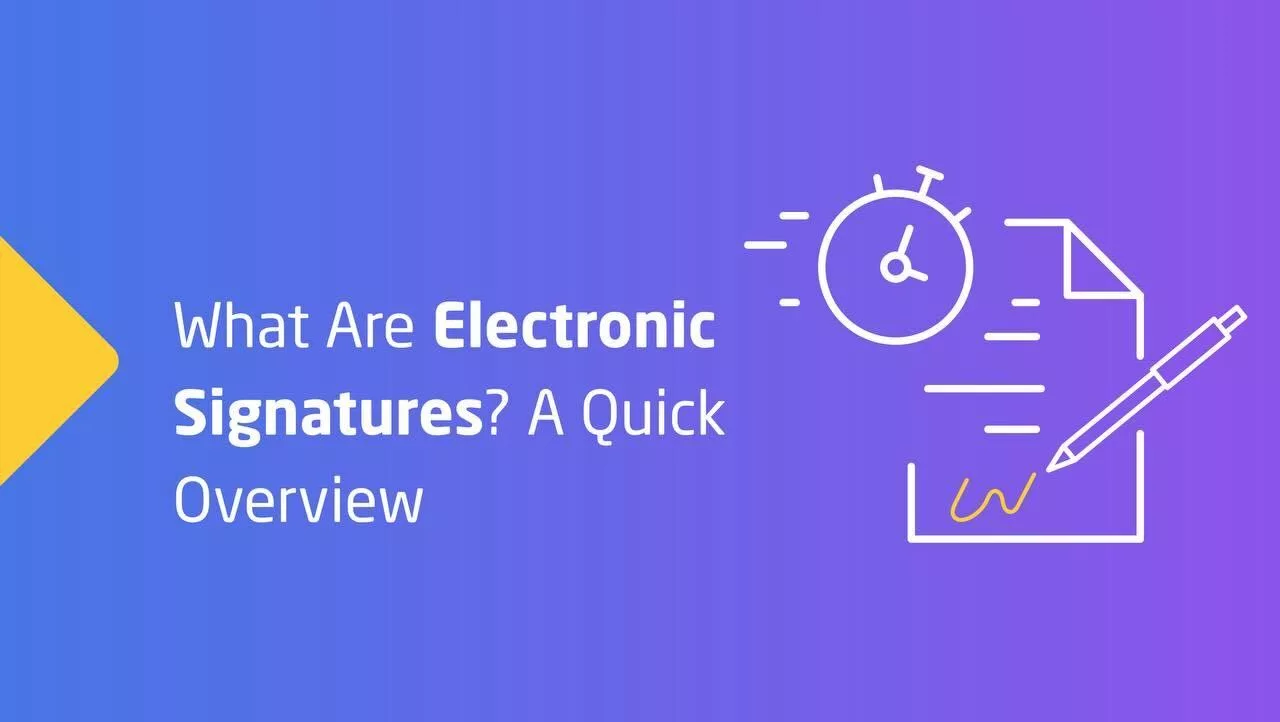
Saudi’s #1 Arabic E-Signature Solution
Empowering Saudi businesses with effortless digital signatures—secure, compliant, and designed for seamless use in both Arabic and English.
Start Free TrialWhat Are Electronic Signatures? A Quick Overview
Electronic signatures work in the same scenarios as regular signatures, such as signing a sales contract, purchase agreement, or accounting invoices.
However, the added functionality, flexibility, and convenience of an e-signature make the technology invaluable to modern businesses.
It’s no secret the way we sign and authenticate documents has changed. While wet signatures still exist — the ongoing digitization of business has led to widespread adoption of electronic signatures (e-signatures) in virtually all industries.
It’s no surprise, then, that the value of the e-signature market reached $5.5 billion in 2022 and will continue to rise.
Why? Because e-signatures add another layer of security and authentication to the signing process, allowing users to authenticate agreements with security features that prove the contract is legally binding in a court of law.
So, how do e-signatures work? And why should your business adopt them? Here’s what you need to know.
How do electronic signatures work?
Electronic signatures are more than just an image of your written name — they have a variety of technologies implemented to make them both legally binding and secure.
And they don’t have to take the form of written names, either. In the Kingdom of Saudi Arabia, an e-signature is legally binding if:
- The signer’s identity is verified
- The document is signed and contains a valid digital certificate
- The e-signature platform is secure, up to date, and has no technical issues
- The platform ensures privacy and complies with the digital certification procedures established by the National Centre for Digital Certification
E-signature verification systems typically use the personal information of the signer to authenticate the document, such as the IP address and time of signing.
Understanding the Legality of a Electronic Signatures in KSA
How do you create an electronic signature?
Creating an e-signature is incredibly easy, especially with Signit. You can create your first e-signature in as little as four steps:
- Register for a free account
- Log into the Signit dashboard
- Upload a document and follow the onscreen prompts of adding signers, signature field’s
- Send the document for signing
Why use an e-signature?
Compared to traditional signatures you write with pen and paper, an e-signature has a variety of advantages:
- Risk control: A properly crafted electronic signature contains many layers of authentication, which provide additional evidence in a court of law.
- Convenience: Anybody signing with an e-signature may do so on almost any device, whether a mobile phone with a touchscreen or a desktop computer with a mouse.
- Cost reduction: A digital e-signature negates the need to mail physical forms back and forth with clients located remotely.
- Auditing: Because an e-signature provides an immediate “paper trail,” it’s invaluable for conducting more efficient and comprehensive audits.
The adoption of e-signature technology generally pushes a business into the Information Age. Since most customers and business partners expect companies to communicate through online means more than ever, supporting e-signatures is paramount.
For instance, signing a bank account opening form can happen remotely without the customer having to come to the branch.
How and where do you use electronic signatures?
Using an e-signature is as easy as receiving a document through a platform, adding your e-signature to the document, finalizing all details, and submitting it.
You’ll find a variety of use cases for electronic signatures, as they fulfill many similar roles as traditional signatures do. Some examples include:
- Sales agreements between individuals and corporations
- Vendor agreements between companies
- HR agreements and employee onboarding
- Non-disclosure agreements (NDAs)
- Internal approvals
- Healthcare documents
Look for available templates of e-signatures to accelerate the process. Many e-signature service providers offer them as part of the platform.
Are there limitations to e-signatures?
Given the significant role signatures play in validating and finalizing transactions, it shouldn’t come as a surprise that certain documents still require a wet signature. In the KSA, these include:
- Property titles and deed transfers
- Granting power of attorney
- Signing Articles of Association for a company with limited liability
What’s the difference between digital signatures and electronic signatures?
Electronic signatures and digital signatures may both be ways to sign a document digitally, but they each serve a distinct purpose.

Saudi’s #1 Arabic E-Signature Solution
Empowering Saudi businesses with effortless digital signatures—secure, compliant, and designed for seamless use in both Arabic and English.
Start Free Trial-
An electronic signature:
verifies the signer’s identity, is legally binding, and establishes the signer has agreed to the terms of the agreement.
-
A digital signature:
verifies the authenticity of the document and ensures it hasn’t been tampered.
Learn How to Electronically Sign a Document?
Close more deals the secure way with Signit
Electronic signatures are a must-have for companies today, especially those looking to create a seamless customer experience.
Are you looking to create a convenient and customer-friendly experience for your document signing process? Get started with Signit today and start taking e-signatures for your digital documents.
Share Article



